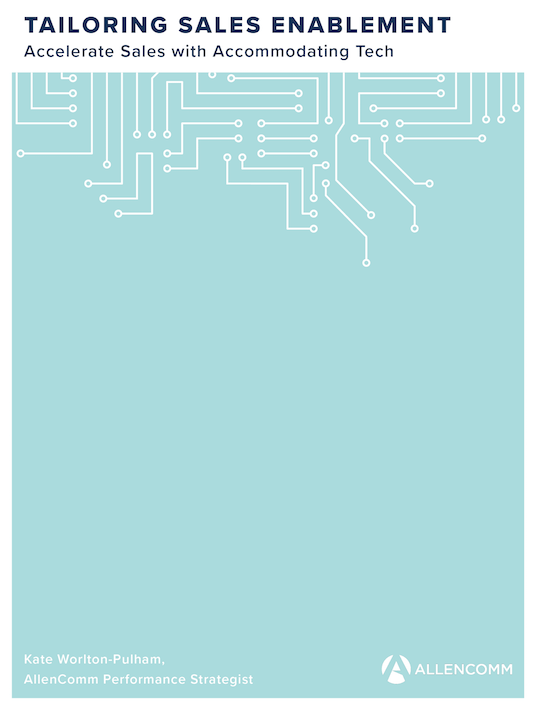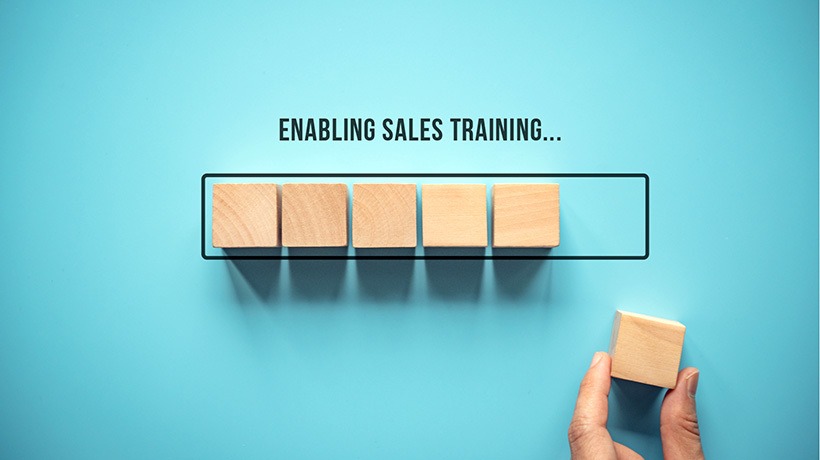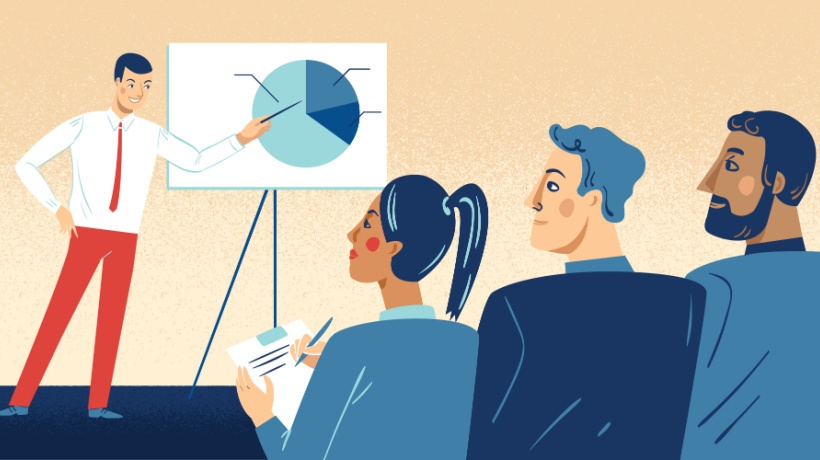Creating A Sales Enablement Program: The Promise, The Pitfalls, And The Trajectory
Sellers don’t need to walk a lonely road. Sales enablement promises a lifeline to help sellers to survive, but it doesn’t always provide them with a platform on which to thrive. Even fewer sales enablement systems cater to the buyer’s success as well. The optimal solution manages what both buyers and sellers need to target their business goals. In doing so, no longer do sales team members need to fend for themselves by creating one-off content from their own research on the competitive market, hunting down relevant blog posts, tracking their own collateral, and trying to manage their own asset repositories.

Sales enablement platforms promise not only to ease the burden of driving a sale through the entire buying process and ensuring there are more opportunities in the pipeline, but also to create and curate content that directly accelerates the exact sale at hand, tying directly to revenue. The right sales enablement program can accelerate this pathway because it allows sales and marketing teams to ramp up faster, fashion the right content for the buyers in the supply chain, and improve competitive win rates, all on any device.
The Numbers On Sales Enablement
Sales enablement advancements, the number of practitioners, and depth of knowledge about the field doubles every year [1]. This means that what was an elusive innovation a year ago is now an accepted standard. Organizations must stay at the forefront to maintain a competitive advantage.
Can you detect the common message among these statistics?
Without Sales Enablement
- Sales and marketing misalignment cost $1 trillion per year.
- Opportunity costs of unused marketing content are $2.3 million annually.
- Sales enablement research reports that 79% of leads sent to sales never convert to sales, partly due to a lack of nurturing.
- Market standards report that 44% of salespeople give up after one follow-up, yet 80% of sales require five follow-up phone calls after the meeting [2].
With Sales Enablement
- A noteworthy 75% of companies using sales enablement tools had sales increases in the last twelve months. Nearly 35% reported sales increases greater than 25%.
- 59% of organizations with a sales enablement solution surpassed their targets.
- Organizations that have undertaken a sales enablement initiative have seen a 350% increase in content usage, 275% boost in conversions, and 65% more revenue generated by new reps.
- Research confirms that 95% of buyers buy from someone who gave them content at each stage of the buying process.
- Businesses whose sales and marketing are aligned achieve 208% higher marketing revenue [3].
The theme we derive from these numbers points toward a marketer-seller-buyer companionship that must be built, energized, and, indeed, enabled for wins to increase.
The Pitfalls Of Sales Enablement
Many sales enablement platforms exhibit similar challenges. Gladly, the remedies to these challenges do not have to involve a complete overhaul of your current process. The remedies can fit within and augment the best parts of your system. In short, the best sales enablement solution addresses these common challenges by tailoring a strategy designed for the organization alone. A sales enablement solution should optimize these three things: the organization’s ability to innovate, scale, and make the impact they want to make.

The Trajectory Of Sales Enablement
While the capabilities of sales enablement are constantly changing, one often forgotten point remains: Sales enablement is always about revenue, not sellers. With boots on the ground, this actually means that sales enablement is about the buyer.
Buyer-Focused Vs. Product-Focused
It’s reported that sellers only spend 18% of their time with buyers [4]. However, once sales teams shift focus from selling products to serving a buyer, they will be met with increased revenue. Sales and marketing are far from immune to the surge of business focus on empathy. In other words, the ace seller considers the buyer’s journey from, first, the buyer’s mindset: the buyer’s awareness, consideration, interest, preference, and, finally, purchase. Second, the seller considers what activity the buyer will be taking at each of these stages. As the seller demonstrates this kind of informed empathy for the buyer, the seller can help escort the buyer through to a completed sale by addressing the buyer’s point-of-view at each step. Your sales enablement solution is the key to success.

Analytics, Machine Learning, AI
In sales enablement and in almost any industry, today’s frontier is tomorrow’s standard. Yesterday, sales enablement analytics was the frontier. Now the norm, analytics can amplify enablement especially by weighing content. Though content management is at the soul of sales enablement, a large investment in content creation does not necessarily equal positive ROI.
A closer critical eye on content usage through AI, Machine Learning, and other analytics is where sales and marketing should be heading to:
- Serve up predicted content
- Understand how content is used, in what geographic location, by which buyers, for how long, etc.
- Report on how content is used at which stage of their buying process and against which sales outcomes
- Ensure prospects in the supply chain
- Understand how content drives revenue
Analysis-Driven
While analytics based on Machine Learning and AI can accelerate the sales process, the capacities of analytics can be limited if it’s jump-started too soon. In short, analytics can miss some crucial context if a human needs analysis isn’t done first.
Quantitative data and qualitative data must work in symbiosis to create the most responsible pool of information from which the enablement solution derives. The combination of empirical data with a nuanced analysis of qualitative factors such as company culture, training states, technology experience, asset relevance, social patterns, and the subsequent execution of the recommendations will maximize the effectiveness of analytics later in the sales enablement initiation process.
IMAGE p.5
For a more detailed view on sales enablement needs analysis, check my article Why Needs Analysis Is Key To A Successful Sales Enablement Strategy.
And if you want to learn more about creating an effective sales enablement program, download the eBook Tailoring Sales Enablement: Accelerate Sales With Accommodating Tech.
References:
- Most Sales Enablement Platforms Fail to Answer the Most Important Question: What Should a Salesperson Do Next?
- 20 Sales Enablement Statistics You Can’t Ignore
Sales-Marketing Alignment Increases Revenue by 208% [Infographic]
10 Surprising Statistics on Sales Enablement ROI - 20 Sales Enablement Statistics You Can’t Ignore
10 Surprising Statistics on Sales Enablement ROI
Sales enablement resource center
What is sales enablement? - Why you need to increase sales rep selling time (and how to do it)









